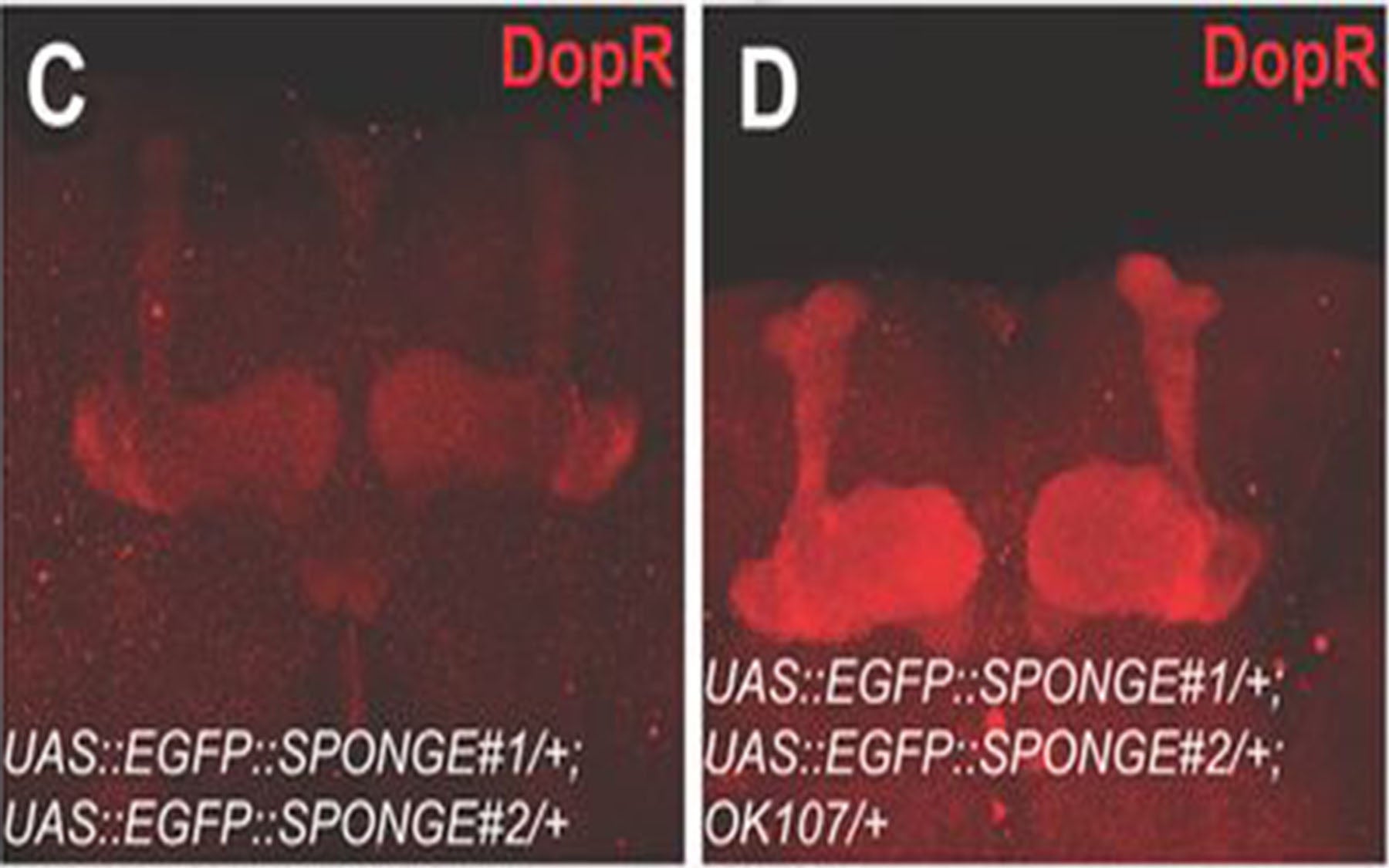A discovery about how brain circuits engage memory in response to odor
Cold Spring Harbor, NY — An organism’s genetic information is stored in its genes, chemical blueprints for the manufacture of proteins. Over a decade ago, however, a new class of genes was identified that do not code for proteins. Instead, they encode small RNA molecules, known as microRNAs, that help regulate gene expression. Little is known about the specific function of microRNAs in the context of how living things behave and how their brains develop.
In a study published today in the Journal of Neuroscience, Cold Spring Harbor Laboratory (CSHL) Professor Joshua Dubnau and his team, including the paper’s fist author Wanhe Li, Ph.D., manipulated gene expression in specific neuronal cell types and at specific times in fruit flies. They identified a microRNA, known as miR-276a, that in two different parts of the fly’s brain plays a role in the memory of an odor and in the overall response to odors. “We’ve discovered that this small RNA is required in several aspects of behavior, including memory about smell—the olfactory memory—and the degree to which flies become aroused in response to odors,” Dubnau says.
Dopamine is a neurotransmitter molecule important in learning and memory in animals, including humans. Its levels need to be carefully regulated. When Li knocked down miR-276a in two neuronal circuits in the fly brain, a receptor type that recognizes and binds dopamine molecules increased in number and interfered with the ability of neurons to respond to olfactory signals. “The neuronal role of this microRNA is to keep the levels of dopamine receptor in check and prevent it from getting too high,” says Li.
“What’s novel in this paper is that we’ve uncovered the mechanism by which the dopamine receptor is regulated by this small RNA,” Li explains. “The fruit fly is such a beautiful genetic system because it allows us to dissect the very complex roles of miR-276a and dopamine receptors in live, behaving animals.”
Written by: Yevgeniy Grigoryev, Guest Science Writer | publicaffairs@cshl.edu | 516-367-8455
Citation
“MicroRNA-276a Functions in Ellipsoid Body and Mushroom Body Neurons for Naive and Conditioned Olfactory Avoidance in Drosophila.” The authors are: Wanhe Li, Michael Cressy, Hongtao Qin, Tudor Fulga, David Van Vactor, and Josh Dubnau.
The paper can be obtained at: DOI:10.1523/JNEUROSCI.4004-12.2013
